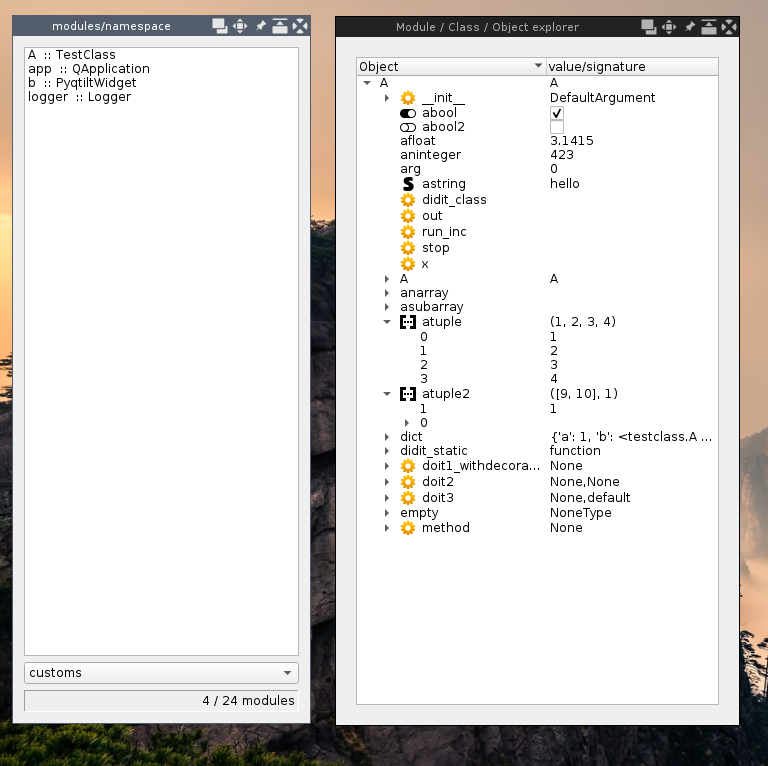I knew QT5, it has proven its worth, even if the complete framework is a bit heavy to install, it runs well, the documentation is fine and the Qt Assistant documentation program is OK.
When wrote in Python, the declaration of the UI components and the signal/slot syntax gets very short. And once the boilerplate code is ready, the setup to make a complex interface — meaning without using QTCreator — can get down to a bare minimum. Now interactive trees are more complex elements, but again as long as the UI is running at a user pace, QT does the job here, and it's OpenGL integration is fine.
This module inspector calls globals(), and uses the ast,
types and inspect modules to expose every types, functions
classes and instances loaded at runtime.
The numpy module is identified and a few restrictions are set, as its arrays and matrix classes are big and heavy (matrices here would need a proper representation). They can however easily be lifted if someone wishes to explore the package from here.
This can be helpful to debug and control program parameters, as it provides display and input to read and modify them in realtime.
Functions can be called by clicking them, and it can integrates seamlessly in any existing program — as long you get QT of course (>=5.1.2). There's realtime demo integrating it in Aris.



